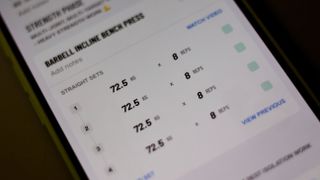Personal training is losing its appeal, according to research – and AI tools may be to blame
On October 29, we reported that the American College of Sports Medicine (ACSM) published its annual survey of its predicted exercise trends for 2025. The survey provides “important information for exercise professionals , business owners and fitness enthusiasts,” designed to “help inform critical business decisions and professional development planning,” according to the ACSM report. These methods differed from region to region, but we will mainly discuss the US-oriented methods in this article.
While wearable technology (such as the best fitness trackers) remained at the top, mobile exercise apps are the best apps for exercise came in second and “data-driven training” in third. The two often go hand-in-hand, with apps and wearables that offer easy ways to record small details about your training, from heart rate to burst power, and use metrics that guide you to train effectively.
Clothes, devices and (by extension) data-driven training are getting smarter, alarmingly. In-app AI chatbots can pull from your data recorded by the app, often with a wearable installed, and then recommend the next steps in your training. You can use real pacers to run against you. Within apps like PUSH and Garmin Connect, training plans can take the last few sessions and schedule them automatically.
Another category that didn’t make the top 10 this year was “personal training” which fell to number 15. Although it’s still prevalent in many countries and popular enough to make it to the top at 20, its sharp fall from “10 guarantees”. care” according to the report, which also noted that “using certified physical therapists only appears to be the top 10 practice in Portugal and Australia”.
Cause and Effect

When you look at the most popular topics, it’s easy to see the connection and cause. According to the US National Strength and Conditioning Association, hiring a personal trainer (PT) can cost anywhere from $25-$100 per session. This is probably on top of the gym membership or day rate, which you will need to get the place.
If you can get a YouTube channel showing free moves, or an AI-powered fitness app that gives you feedback for $8.99 a month, it’s hard for most people with the cost of living to justify hiring a PT like anything else. more luxury, like a massage or spa day.
To say that you can get the full personal training experience from an app on your phone would be an insult to the hardworking coaches who are amazing coaches, influencers and experts in their field. However, there is no denying that personal training, once the center of the fitness industry, is losing popularity, and PTs must diversify their sources of income to make it in 2024. This money it can range from offering online classes, writing books to advanced marketing. themselves as professionals, creating their own training app or social media community, or becoming part-time content creators.
Very few PTs would sign up knowing they would need to be successful writers, programmers, marketers or camera talent: there was a time when all you needed was to they are good at training people, but those days are long. it’s gone. The most successful PTs now are network builders and content marketers, not necessarily professional trainers.
Now that data-driven apps and wearables can offer interactive programs and even chatbot feedback, the fitness industry has become the latest in a long line of sectors to be hit hard by automation and AI. I’m not sure what the answer is for all the talented PTs and trainers out there, but I don’t envy them trying to maintain an analog business in a world that, with the advent of AI, has become a digital reality. – first.
You may also like…
#Personal #training #losing #appeal #research #tools #blame